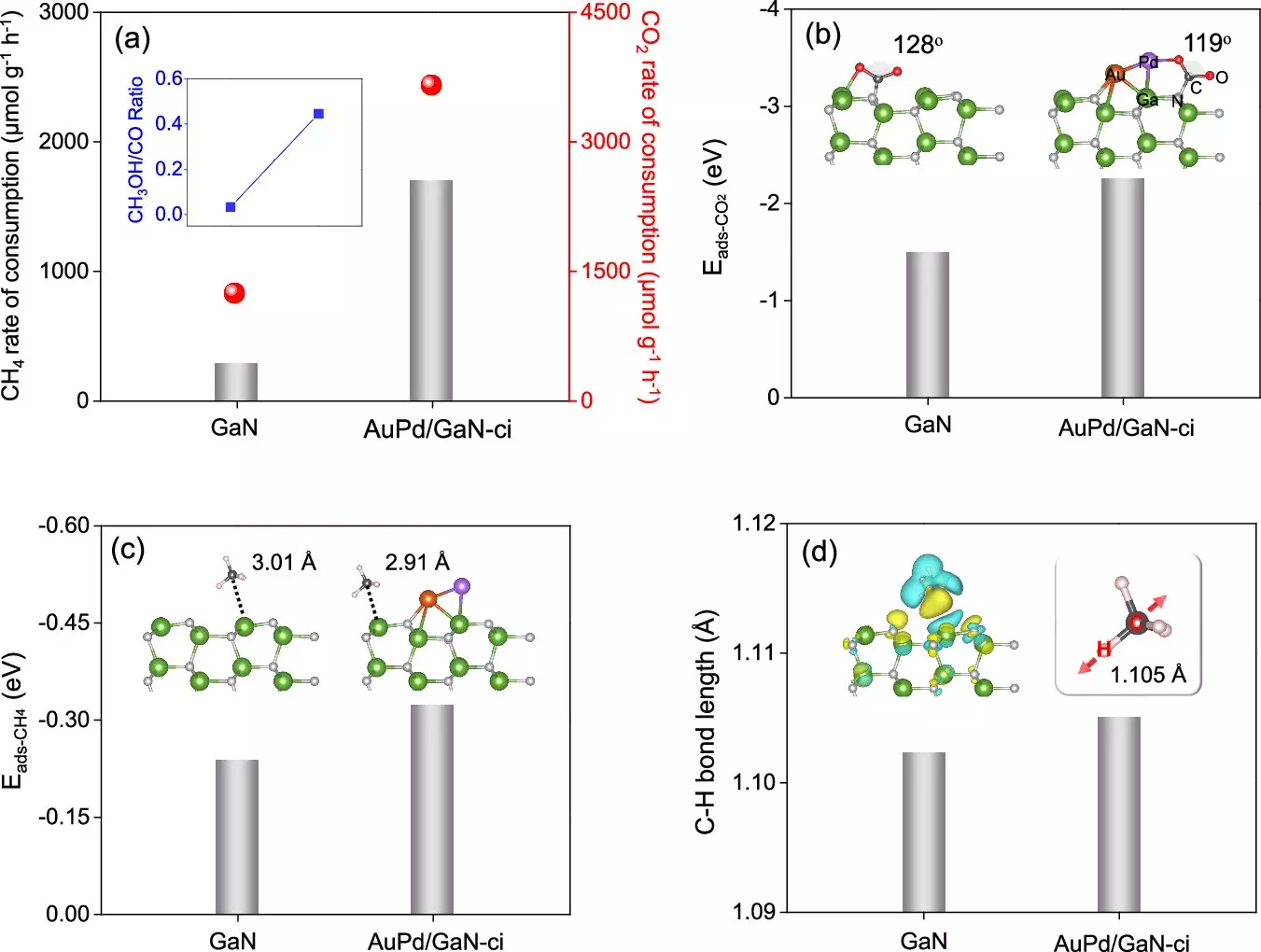In a significant stride toward sustainability, researchers at McGill University have unlocked a method that utilizes sunlight to convert harmful greenhouse gases into valuable resources. This groundbreaking discovery promises to address the dual crises of climate change and pollution by presenting a novel approach to industrial production. The process not only reduces emissions but also serves as a transformative mechanism that repurposes waste gases, thus proposing an innovative solution to a pressing global issue.
At the heart of this research is a unique light-driven chemical process that enables the conversion of two notorious greenhouse gases—methane and carbon dioxide—into green methanol and carbon monoxide. These products are highly sought after in various industries, particularly in the realms of energy and manufacturing. The team’s findings, shared in the journal *Nature Communications*, demonstrate a sophisticated mechanism inspired by natural processes like photosynthesis. Just as plants utilize sunlight to synthesize glucose, this new technique harnesses solar energy to drive chemical reactions that yield useful substances, thereby mimicking nature’s efficiency.
Innovation in Catalysis
The chemical transformation is made possible through a carefully designed catalyst composed of gold, palladium, and gallium nitride. When exposed to sunlight, this catalyst instigates a critical reaction wherein an oxygen atom from carbon dioxide bonds with a methane molecule. As a result, green methanol is created, with carbon monoxide emerging as a secondary product. The process stands out for its operational simplicity; functioning at room temperature, it alleviates the need for the high temperatures and harsh chemicals commonly employed in traditional chemical reactions. This might represent a paradigm shift in how such reactions are conducted, promoting not just efficiency but also safety and sustainability.
The implications of this research extend beyond theoretical concepts. As Canada aims for net-zero emissions by 2050, this innovative chemical process appears as a beacon of hope. By rethinking how to handle greenhouse gases, the researchers effectively present a strategy that does not merely aim to reduce emissions but actively recycles them into productive forms. According to Chao-Jun Li, one of the study’s senior authors and a notable figure in Green Chemistry, this process provides a compelling path not only for environmental remediation but also for the creation of sustainable products.
What this research showcases is far more than a scientific triumph; it illustrates a vision for a sustainable future where waste can be deemed a resource rather than a liability. By galvanizing the power of sunlight and employing cutting-edge technology, researchers at McGill University have paved the way for methods that could redefine industrial practices. As society navigates the intricate challenges posed by climate change, innovations such as these underscore the importance of scientific exploration and ingenuity in creating a cleaner, greener world for generations to come.


Leave a Reply